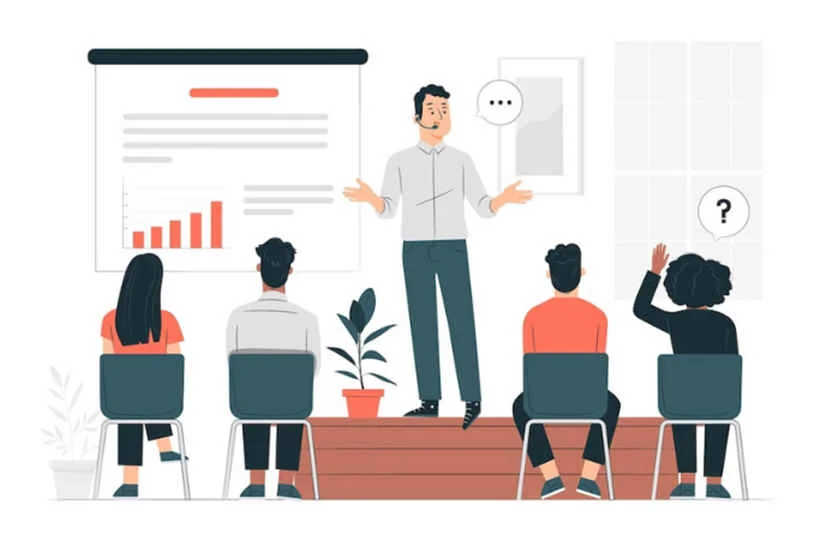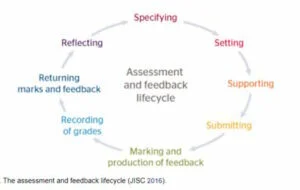
Teachers as designers of assessment of education in- and out- of the classroom.
The COVID19 pandemic brought an unprecedented shift in education all around the world. Kenya was heavily affected with a newly adopted Competence-Based Curriculum in its first stages of implementation.
One of the facets of education that had significant increase in focus was the area of assessments. So, some pre-COVID19 concerns about education with technology that may increase the impact and risk of poor teaching, learning and assessment practices, causing long-lasting damage to learners and teachers, were set aside.
Teachers had to swiftly transition from traditional teaching and learning practices to “remote teaching and learning with technology”. Education practitioners began to question how assessments were conducted on learners’ performance, progress and skills mastery.
Challenges faced: The transition to change assessments using technology has come with several challenges for the teacher and the learner.
These include:
- Undertaking assessment in far from ideal physical conditions
- Having limited and unreliable access to data
- Lack of appropriate quiet space to study and complete assessments
- Facing additional personal and social challenges such as poor access to medical care, huge family responsibilities, and mental health burdens
- limited time periods when they can do assessments
- Invigilating exams online comes with high cost of setting up proctoring tools
Concerns of maintaining a high level of quality teaching and learning and academic integrity have been heightened, and concerns of teachers with low digital literacy skills that affect lesson planning, scheduling assessments, marking, giving feedback, and teacher availability.
Technology-enabled assessment, despite its challenges, is proving to deliver creative, inclusive, innovative solutions that help teachers to implement their teaching, learning, and assessment practices holistically.
Solutions that work:
When designing technology-enabled assessment components, teachers can apply the following strategies:
- Teachers can design assessment activities that allow the assessment to be opportunistic, where learners can use a variety of digital devices to access assessment anywhere, anytime; to be immersive, where learners can collaborate, create and communicate their own self- and group assessment opportunities; and to be connected, where learners can personalize and submit responses for a global audience
- Teachers can design intentional, inclusive, and authentic assessment using frameworks that remove the challenges to applying technology within the assessment and feedback lifestyle (shown in the figure below). Some of the frameworks that can be used are:
- The Revised Bloom’s Taxonomy framework – aligning learning outcomes with assessment activities for different levels of learning trajectories.
- Universal design for learning (UDL) Framework – making assessment inclusive for a diverse group of learners in the classroom through multiple means of engagement, multiple means of representation, and multiple means of action and expression.
- Dynamic Learning framework – where learners go Beyond the bell (continuous learning, self-paced, anytime, anywhere), Beyond the grade level and subject areas (Enhance exploration of passions and interests), Beyond the walls (bring the world to students – publish quality presentations for a global audience), Beyond the tools (deeper, extended learning, ), and Beyond the due date (push the boundaries beyond final assessments)

- Other solutions that teacher can apply to reduce assessment challenges relate to specific assessment types
- Time-constrained, invigilated exams or in-class tests can be changed to “Take-away” tests
- In-class presentations can be changed to PowerPoint presentation
- Portfolio, logbook or assessment notebook can be changed to e-portfolios
- Live oral or presentations can be undertaken via Zoom, TeamViewer, Google Meet, Microsoft Teams, or other electronic remote means.
- Assessed seminars, group discussions and other similar activities can be held in an online platform that support chat rooms, webinars, or podcasts.
- Lab work can be replicated through simulations in which students are presented with data sets and required to interpret them.
- Posters can be changed to a digital infographic, mind map or other visuals
- Peer assessments and support can be done via email or use Discussion Forums or chat rooms
- Theatre, dance and other performances can be prepared and submitted as videos of off-site work, alongside reflective journals.
- Face-to-face feedback can be delivered by teachers via video, audio or text means where appropriate
- Teachers can design strategies to enhance integrity, and moreso, discourage cheating. The biggest factors behind cheating are stress, instability, and lack of engagement. Some of the strategies that can reduce stress, instability and lack of engagement are:
- Using frequent, low- or no-stakes assessments to provide learners with multiple opportunities to practice applying newly acquired knowledge and skills
- Using small, mini-exams, frequently.
- Using a large question bank where learners receive different sets of questions.
- Using other types of assessments instead of multiple-choice testing that probe critical thinking and creativity.
- Providing estimates of how much time an assessment should take, clearly expressing what’s to be done, and sharing rubrics or examples of quality work when possible.
At Firefly Edtech Solutions, we define assessments as “critical checkpoints that enable learners, teachers and parents to ascertain how well or poorly learners are faring with regard to the ultimate goal of securing their future”.
Teachers are the drivers of education and the learning progress in schools. Whether it is assessment of learning, assessment for learning or assessment as learning, It’s now clear that the goal of assessment is not only to give grades on the students’ performance today but to support their future learning and growth of self-regulated learning skills, the ability to set goals for their learning, and monitor their knowledge, skills, and behavior.
Books every teacher should read:
Finally, I recommend the following books that every teacher should read:
- Curriculum 21: Essential Education for a Changing World (Professional Development) by Heidi Hayes Jacobs
- Shake Up Learning: Practical Ideas to Move Learning from Static to Dynamic by Kasey Bell
- Out of Our Minds: The Power of Being Creative by Sir Ken Robinson
- Disrupting Class: How Disruptive Innovation Will Change The Way the World Will Learn Expanded Edition by Clayton M Christensen, Michael B. Horn, and Curtis W. Johnson.
- The Code Breaker: Increase Creativity, Remix Assessment, and Develop a Class of Coder Ninjas! by Brian Aspinall
All teachers should be given the support they need and enabled to produce the best caliber of graduates in our society. Support from all stakeholders – government, school boards, head teachers, parents and guardians, and other community-based organizations.
Andrew Deacon 2021, Redesigning Assessments for Remote Teaching – CILT Guide, University of Cape Town, South Africa
Share Article
